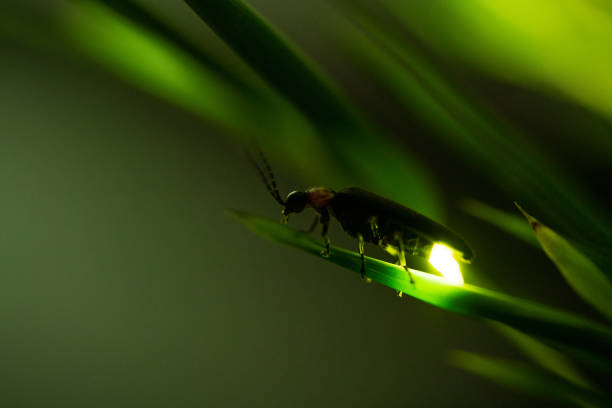Unraveling the Enigma of Bioluminescent Beetles
The world of insects never ceases to amaze, and among its most captivating marvels are bioluminescent beetles. These fascinating creatures, capable of producing their own light, have long intrigued scientists and nature enthusiasts alike. From the iconic firefly to lesser-known species, bioluminescent beetles offer a glimpse into the remarkable adaptations that evolution has crafted.

The Science Behind the Glow
Bioluminescence in beetles is a complex biochemical process that involves the interaction of several key components. At the heart of this phenomenon is a chemical reaction between a light-emitting compound called luciferin and an enzyme known as luciferase. When these two substances combine in the presence of oxygen and ATP (adenosine triphosphate), the result is the production of light.
The bioluminescent organs of beetles, called lanterns, are typically located on the underside of their abdomens. These specialized structures contain light-producing cells called photocytes, which are surrounded by reflective tissues that help direct the light outward. The intensity and color of the light produced can vary between species, ranging from yellow-green to red.
Evolutionary Marvels: Why Beetles Glow
The ability to produce light has evolved independently in various beetle lineages, suggesting that bioluminescence offers significant evolutionary advantages. Scientists have identified several key reasons why beetles might have developed this remarkable trait:
-
Mate attraction: Many species use their bioluminescent displays to attract potential mates. Male fireflies, for instance, flash specific patterns to signal their availability to females.
-
Predator deterrence: Some bioluminescent beetles use their light as a warning signal to potential predators, indicating that they may be toxic or unpalatable.
-
Prey attraction: Certain species of bioluminescent click beetles use their light to lure in small insects, which they then consume.
-
Communication: Bioluminescence can serve as a form of intraspecies communication, allowing beetles to coordinate group behaviors or warn of potential dangers.
Beyond Fireflies: Diverse Bioluminescent Beetle Species
While fireflies are the most well-known bioluminescent beetles, they are far from the only ones. The world of light-producing beetles is surprisingly diverse, with various species exhibiting unique adaptations and behaviors:
-
Railroad worms: These South American beetles belong to the family Phengodidae and are known for their ability to produce two different colors of light – red from their heads and greenish-yellow from segments along their bodies.
-
Click beetles: Some species of click beetles, particularly those in the genus Pyrophorus, possess bioluminescent organs on their thorax and abdomen.
-
Glowworm beetles: Female glowworm beetles (family Lampyridae) are flightless and resemble larvae. They emit a continuous glow to attract flying males.
-
Luminous net-winged beetles: These beetles, found in parts of Asia and Australia, produce a soft blue-green glow and are known for their intricate wing patterns.
Ecological Significance and Conservation Concerns
Bioluminescent beetles play crucial roles in their ecosystems. As indicators of environmental health, their presence or absence can provide valuable insights into habitat quality and pollution levels. Additionally, many species serve as important pollinators and contribute to nutrient cycling in their habitats.
However, like many insects worldwide, bioluminescent beetle populations face numerous threats. Habitat loss, light pollution, and climate change are among the primary factors contributing to their decline. Conservation efforts are underway in various parts of the world to protect these unique creatures and their habitats.
Inspiring Innovation: Bioluminescent Beetles in Science and Technology
The fascinating properties of bioluminescent beetles have not gone unnoticed by the scientific community. Researchers are exploring various applications inspired by these insects:
-
Biomedical imaging: The genes responsible for bioluminescence in beetles have been used to develop powerful imaging tools for studying cellular processes and disease progression in living organisms.
-
Environmental monitoring: Scientists are developing biosensors based on beetle bioluminescence to detect pollutants in water and soil.
-
Sustainable lighting: Efforts are underway to create bioluminescent plants and trees inspired by light-producing beetles, potentially offering eco-friendly alternatives to electric lighting.
-
Pest control: Researchers are investigating how bioluminescent signals could be used to develop more targeted and environmentally friendly pest management strategies.
As we continue to unlock the secrets of bioluminescent beetles, it becomes increasingly clear that these small creatures hold immense potential for scientific advancement and technological innovation. From their role in ecosystems to their applications in cutting-edge research, bioluminescent beetles remind us of the endless wonders that nature has to offer and the importance of preserving biodiversity for future generations to study and admire.





